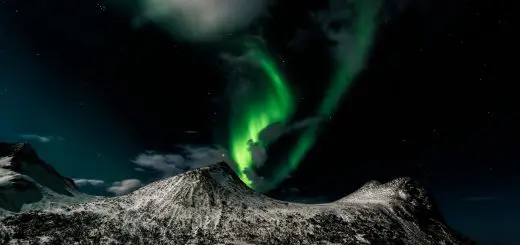Why Do Birds Fly in a V-Formation?

Looking for more amazing products? Check out our online store and explore our collection here! Happy shopping!
Before diving in, please note: This post is for informational purposes only. If you’d like to know more about how we approach topics, feel free to check out our friendly Disclaimer Page.
Hey there, amazing readers! 
We’re committed to delivering quality posts, and your support (even just sticking around despite the ads) means everything to us. So, bear with us, and thanks for helping us keep the good vibes rolling. Now, on to the fun stuff!
TRANSLATE BUTTON AT THE END OF THE ARTICLE
A Quick Overview
Have you ever paused to watch a flock of birds flying in a perfect V-formation, gliding gracefully across the sky?
It’s a sight that never fails to capture our imagination.
But why do they do this?
What drives this fascinating behavior?
Join me on a journey as we explore the reasons behind this aerial choreography.
Understanding the Fascinating V-Formation of Birds
When you see birds flying in a V-formation, it’s like nature’s very own dance.
This arrangement isn’t just for show; it serves multiple practical purposes.
Primarily, it’s a strategy for migration, where birds travel long distances in search of food or warmer climates during seasonal changes.
The V-shape helps them cover vast distances more efficiently.
Different bird species, particularly waterfowl like geese and ducks, utilize this formation.
Each bird takes a turn at the front, sharing the burdens of flight.
The positioning in the V allows them to experience reduced wind resistance, which can make a substantial difference over long distances.
Moreover, V-formation offers a strong visual cue.
Birds can easily keep track of one another in the sky, ensuring cohesion in their flight path.
It’s a system that blends science, teamwork, and instinct, creating a visual spectacle that many of us marvel at from below.
The Science Behind Bird Migration Patterns Explained
Bird migration is a remarkable phenomenon that showcases the intelligence of these creatures.
Birds migrate based on seasonal changes, often flying thousands of miles.
For instance, many species travel from North America to Central and South America during winter.
This journey is not taken lightly; birds rely heavily on instincts, environmental cues, and their natural navigation skills.
Research suggests that many birds use the sun, stars, and even the Earth’s magnetic field to guide them.
Their internal clocks help maintain their migratory schedules.
As they travel, they often follow geographical landmarks such as mountains and rivers.
One intriguing aspect of migration is the timing.
Birds undertake their journey based on various factors, including temperature, daylight, and availability of food sources.
This interplay of elements reveals the complex decision-making process in the avian world.
How V-Formation Helps Birds Save Energy During Flight
Energy conservation is crucial for birds, particularly during migration.
Flying in a V-formation allows birds to take advantage of updrafts created by the bird ahead of them.
This updraft reduces the amount of energy consumed, allowing them to fly longer without exerting extra effort.
The lead bird expends the most energy, creating a slipstream, or pocket of air, behind it.
When the following birds glide into this pocket, they can maintain speed with less effort.
Discover "Dog Care: Learning How to Care for Your Furry Friend
"
This energy-saving technique can mean the difference between a successful migration and a failed one.
A study found that birds flying in a V-formation can save up to 70% of their energy compared to flying solo.
This incredible efficiency enables them to travel further and withstand the physical toll of long journeys.
The Role of Wind Resistance in Bird Flight Dynamics
Wind resistance is a crucial factor in bird flight dynamics.
The aerodynamic shape of a bird’s body plays a significant role in how efficiently it can cut through the air.
Birds are designed with streamlined bodies that reduce drag.
In a V-formation, the leading bird creates turbulence, and the birds behind benefit from the reduced wind resistance.
Each bird in the formation can position itself to maximize this advantage.
They adjust their altitude and distance based on the wind conditions, demonstrating impressive adaptability.
Interestingly, this behavior isn’t just instinctual; studies show birds can make real-time adjustments to optimize their flight paths.
It’s almost like they have a built-in GPS guiding them through the skies.
Social Behavior: Why Birds Prefer to Fly Together
Birds are social creatures, and flying together is more than just energy efficiency; it’s also about safety.
Flocking helps protect individual birds from predators.
When they fly in a group, it’s harder for a predator to single one out.
Additionally, there is comfort in numbers.
Birds that migrate together develop strong bonds, creating a sense of unity.
This social structure helps them communicate better, making collaborative decisions about their route and pace.
Think about it; when we travel, we often prefer to stick with friends or family.
Birds do the same!
They rely on each other, which makes their journeys more enjoyable and less stressful.
The Leadership Dynamics in a Bird Flock’s V-Formation
Leadership in a flock can shift frequently, and it’s fascinating to observe.
The lead bird plays a crucial role in determining the flock’s direction and speed.
But, interestingly, this position is not static.
Eventually, the lead bird tires and rotates back into the formation.
This rotation allows the flock to share the energy expenditure and ensures that no single bird bears the entire burden of navigation.
It’s a democratic process in a way—each bird has its turn to lead.
Birds in the V-formation communicate through calls and body language as they adjust their positions.
This dynamic highlights the importance of teamwork in avian behavior.
It’s a cooperative effort that showcases the intelligence and resourcefulness of these remarkable creatures.
How Young Birds Learn to Fly in a V-Formation
Young birds learn through observation and imitation.
They start flying in small groups, gradually integrating into larger flocks.
This learning process is often trial and error, with young birds mimicking the movements of their parents and older flock members.
As they gain experience, they learn the optimal positions within the V-formation.
Young avian learners also hone their skills in energy conservation and navigation, crucial for successful migration.
Sometimes, young birds may struggle to keep up, and that’s perfectly normal.
Older, more experienced birds will often adjust their pace, providing guidance and support.
This nurturing aspect of bird behavior is beautiful to witness.
The Importance of Positioning Within the V-Formation
Positioning in the V-formation matters more than you might think.
The lead bird faces the most resistance and bears the greatest responsibility for navigation.
The birds behind benefit from the uplift and reduced drag, which is why they can conserve energy.
Each bird has its preferred spot—some may like to be at the front, while others prefer the middle or rear.
This choice can depend on their physical condition, experience level, or even personal preference.
When positioning, birds also communicate with one another to maintain cohesion.
If one bird drifts too far off course, others will adjust to bring them back into alignment.
It’s a remarkable dance of cooperation.
Navigational Skills: Finding the Best Flight Path
Navigating through the sky is not just about instinct; it’s a skill that birds refine over time.
Experienced birds typically lead their flocks and make quick decisions based on weather patterns and visible landmarks.
They have an incredible ability to sense changes in wind and temperature, adjusting their flight path as needed.
When conditions are not favorable, they can switch to a different route, demonstrating their adaptability.
This skill is especially crucial during long migrations, where the distance covered can be immense.
The right navigational decisions can mean the difference between success and hardship.
Seasonal Changes and the Need for V-Formation Flying
As seasons change, birds respond to fluctuations in temperature and daylight.
The arrival of spring prompts many species to migrate north for breeding, while autumn signals the time to head south.
During these migrations, flying in a V-formation becomes even more critical.
The energy-saving benefits help ensure that birds can reach their destinations before winter sets in.
The drive to migrate is deeply ingrained in their biology.
Birds have an internal clock that prompts them to begin their journey at just the right moment.
It’s remarkable how they synchronize this natural instinct with environmental cues.
The Impact of V-Formation on Bird Communication
Communication plays a vital role in a bird’s journey.
While they fly in a V-formation, birds often use vocalizations and body language to maintain contact with each other.
These calls can serve as cues for speed changes or directional shifts, ensuring that the flock stays cohesive.
Interestingly, studies have shown that younger birds might learn specific calls from older members of their flocks.
This auditory communication helps them develop their skills and solidify their place within the social structure of the group.
So, the symphony of sounds accompanying the sight of a V-formation isn’t just noise—it’s a crucial element of their migratory success.
Fun Facts About Birds and Their Flying Techniques
Birds and their flying techniques are full of surprises.
Here are some fun facts that might make you appreciate these creatures even more:
Some birds, like the common swift, can fly for months without landing!
The American flamingo can fly at speeds up to 55 miles per hour.
Penguins, despite their inability to fly, can reach impressive speeds underwater.
The average flock of migrating geese can number in the thousands!
Albatrosses can glide for hours with minimal flapping, covering vast distances over the ocean.
These facts illustrate the diversity of avian flight techniques, emphasizing how various species have adapted to their environments.
Conclusion
Birds flying in a V-formation is a masterclass in teamwork, energy conservation, and navigation.
From the science behind their migration to the social bonds they form, this behavior is a testament to their intelligence and adaptability.
Next time you see a flock soaring through the sky, take a moment to appreciate the beauty and complexity of their journey.
Flying together isn’t just a means of travel—it’s a way of life.
So, let’s continue to admire these marvels of nature and perhaps even learn a thing or two about cooperation and teamwork from our feathered friends!

The Enlightenment Journey is a remarkable collection of writings authored by a distinguished group of experts in the fields of spirituality, new age, and esoteric knowledge.
This anthology features a diverse assembly of well-experienced authors who bring their profound insights and credible perspectives to the forefront.
Each contributor possesses a wealth of knowledge and wisdom, making them authorities in their respective domains.
Together, they offer readers a transformative journey into the realms of spiritual growth, self-discovery, and esoteric enlightenment.
The Enlightenment Journey is a testament to the collective expertise of these luminaries, providing readers with a rich tapestry of ideas and information to illuminate their spiritual path.
Our Diverse Expertise
While our primary focus is on spirituality and esotericism, we are equally passionate about exploring a wide range of other topics and niches 

To ensure we provide the most accurate and valuable insights, we collaborate with trusted experts in their respective domains 
Our blog originally focused on spirituality and metaphysics, but we’ve since expanded to cover a wide range of niches. Don’t worry—we continue to publish a lot of articles on spirituality! Frequently visit our blog to explore our diverse content and stay tuned for more insightful reads.
Hey there, amazing reader! 
Check out our store here and take a peek at some of our featured products below! Thanks for being awesome!










